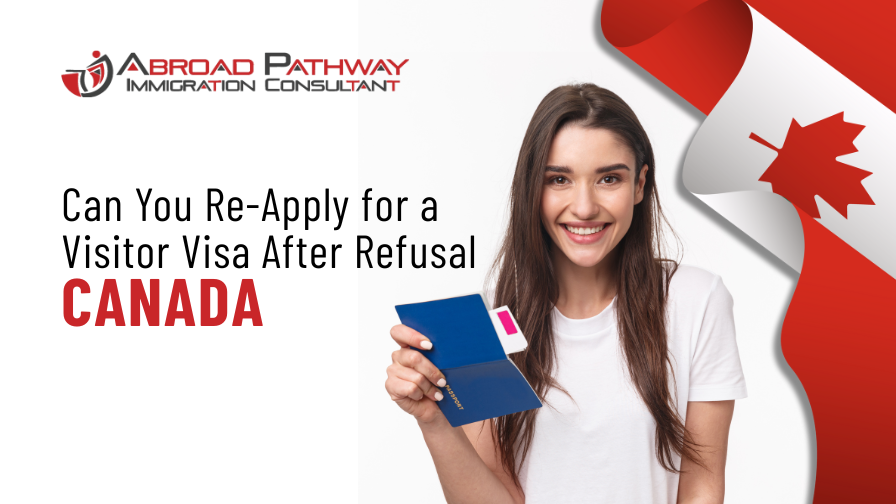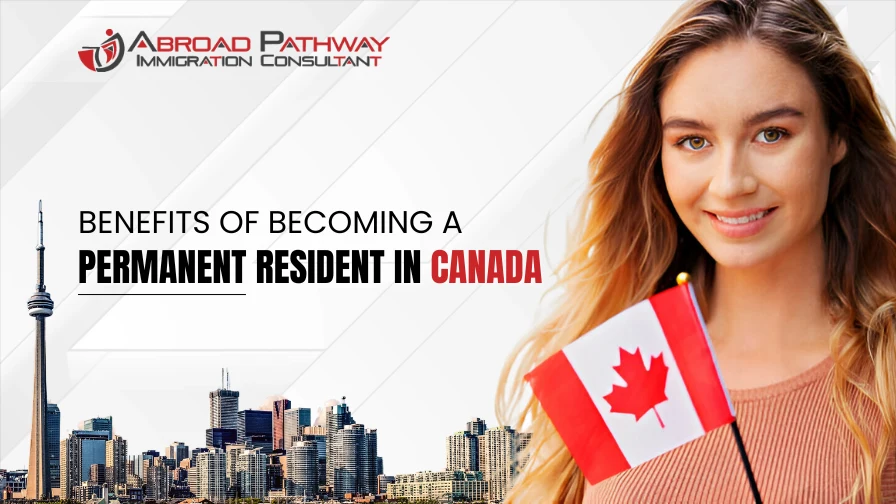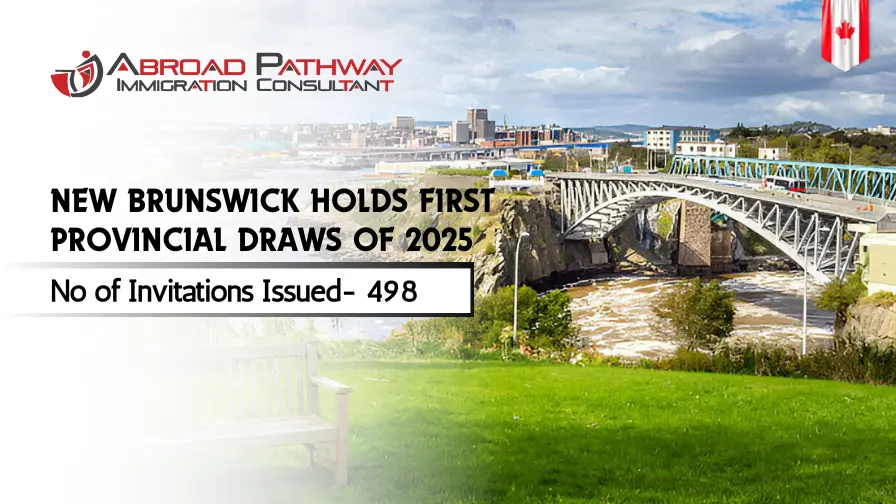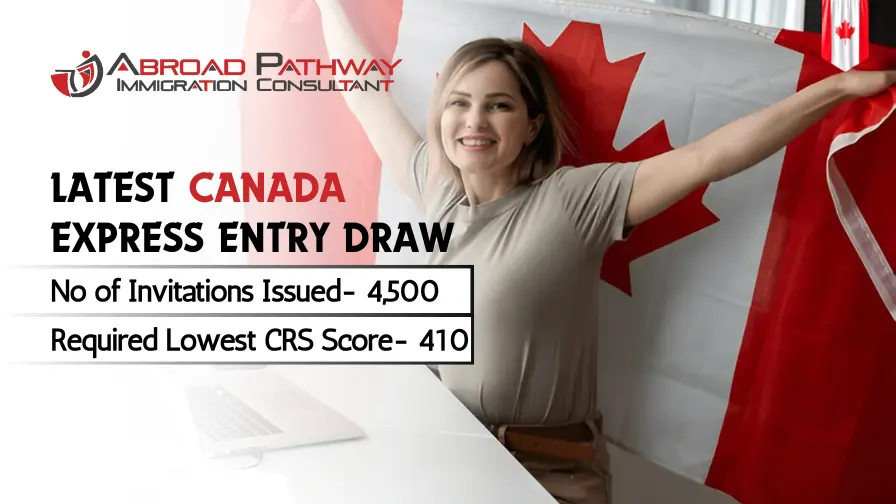Can You Re-Apply for a Visitor Visa to Canada After Refusal?
2025-02-26 | Abroad Pathway Immigration | Leave a Comment

Getting turned down for a visitor visa to Canada can feel like a major setback. But don’t worry, it’s not the end of the road. If you’re wondering, "Can you re-apply for a visitor visa to Canada if you have been refused?" the answer is yes, you absolutely can. In this article, we’ll break down what you need to know to try again with a stronger application.
Key Takeaways
- Yes, you can re-apply for a visitor visa to Canada after a refusal.
- Understanding why your visa was refused is the first step to improving your application.
- You’ll need to address the reasons for the previous refusal in your new application.
- Providing strong proof of ties to your home country can make a big difference.
- Seeking advice from immigration professionals can boost your chances of success.
Understanding Visitor Visa Refusals to Canada
Common Reasons for Visa Refusals
Getting a visitor visa refusal can be frustrating, but understanding the reasons behind it is the first step to addressing the issue. Common reasons include:
- Incomplete or inaccurate information: If your application contains errors or missing details, it may be rejected.
- Insufficient financial proof: Immigration officers need to be convinced you can support yourself during your stay.
- Lack of strong ties to your home country: Without evidence that you’ll return home, your application may be denied.
- Previous immigration violations: Past non-compliance with visa terms can impact your current application.
If you’ve faced a refusal, don’t take it as a permanent setback. Instead, use it as a learning opportunity to strengthen your future applications.
How Refusals Are Communicated by Immigration Authorities
When your visa is refused, the immigration authorities will send you a formal refusal letter. This document outlines the reasons for the decision. It’s crucial to read this letter carefully, as it provides insight into what went wrong. The letter might mention specific shortcomings, such as missing documents or doubts about your travel intentions.
Take the time to fully understand the refusal letter. It’s your roadmap for improving your next application.
Impact of a Refusal on Future Applications
A refusal doesn’t mean you can never apply again, but it does leave a record. Immigration officers will review your previous applications, so it’s essential to address all the issues mentioned in the refusal letter. Repeated refusals without significant changes to your application can make future approvals even harder.
To improve your chances:
- Review your application thoroughly for errors.
- Provide additional supporting documents that address the reasons for refusal.
- Consider seeking professional advice to ensure your next application is stronger.
If you’re unsure about your eligibility after a refusal, remember that individuals may be deemed inadmissible for reasons beyond just missing documents, such as security concerns or other factors. Knowing where you stand is key to moving forward.
Steps to Take After a Visitor Visa Refusal
Reviewing the Refusal Letter
The first thing you should do after a visa refusal is carefully read the refusal letter. This document outlines why your application was denied and provides clues on what to fix. Understanding these reasons is critical for your next steps. Look for specific issues like missing documents, insufficient proof of ties to your home country, or unclear financial information.
Identifying Mistakes in Your Application
Once you know why your visa was refused, go through your original application to spot any errors or omissions. Common mistakes include:
- Forgetting to include required documents.
- Providing outdated or incorrect information.
- Failing to clearly demonstrate your intent to return to your home country.
By identifying these issues, you can avoid repeating them in your re-application.
Seeking Professional Advice for Re-Application
If you’re unsure how to address the refusal reasons, consider seeking help from an immigration consultant or lawyer. They can provide tailored advice and help you build a stronger case. Sometimes, professional guidance can make the difference between another refusal and an approval.
A refusal isn’t the end of the road—it’s a chance to improve and try again with a stronger application.
Eligibility to Re-Apply for a Visitor Visa to Canada
When You Can Re-Apply After a Refusal
You can re-apply for a visitor visa to Canada at any time after a refusal. However, it’s important to address the reasons for the denial before submitting a new application. Immigration authorities don’t impose a waiting period, but rushing to re-apply without fixing the issues in your previous application can lead to another refusal. Take the time to review your case carefully.
Documents Needed for a Stronger Application
To improve your chances, ensure your application includes the following:
- A detailed explanation addressing the previous refusal reasons.
- Updated financial documents showing sufficient funds for your trip.
- Proof of strong ties to your home country, such as property ownership, employment, or family responsibilities.
- A well-written cover letter explaining your purpose of travel and how you’ve addressed the concerns from your earlier application.
Having these documents ready and well-organized can make a big difference in how your application is assessed.
Addressing Previous Refusal Reasons
The most critical step is to tackle the specific reasons for your earlier refusal. If the denial was due to insufficient financial proof, provide updated bank statements or pay stubs. If it was because of weak ties to your home country, include evidence like a job contract, business registration, or family commitments. Be transparent and thorough in addressing these issues.
Immigration officials look for clear evidence that the circumstances leading to your refusal have been resolved. Taking the time to strengthen your application shows your commitment and seriousness about visiting Canada.
For more insights on how to re-apply for a Canada tourist visa after rejection, check out how to address denial reasons and submit additional documents.
How to Strengthen Your Visitor Visa Application
Providing Proof of Ties to Your Home Country
One of the key things immigration officers look for is whether you have strong reasons to return to your home country. This is crucial to show you don't intend to overstay your visa. Some examples of ties include:
- A stable job or business ownership
- Family responsibilities, like taking care of children or elderly parents
- Property ownership or long-term rental agreements
Make sure to include official documents, like employment letters, property deeds, or even family photos if relevant. These help paint a complete picture of your life back home.
Demonstrating Financial Stability
Immigration authorities want to know you can afford your trip and won't rely on public funds. To prove this, you can provide:
- Recent bank statements (last 3-6 months)
- Pay stubs or salary slips
- Proof of savings or investments
If someone else is sponsoring your trip, include their financial details and a letter explaining their support. Including too little financial information is a common mistake, so double-check this part.
Writing a Convincing Cover Letter
A well-written cover letter can tie your entire application together. Use it to explain why you're visiting Canada, how long you plan to stay, and how you'll support yourself during your trip. Make it personal, but professional.
Here’s a simple structure for your letter:
- 1. Start with a polite introduction and your purpose for visiting.
- 2. Explain your travel plans, including dates and locations.
- 3. Address any red flags, like prior visa refusals, and explain how you've resolved them.
- 4. Close by thanking the officer for their time and consideration.
A strong application is like a puzzle—all the pieces need to fit perfectly. From financial documents to personal ties, each part should clearly show that you're a genuine visitor with every intention of returning home.
Common Misconceptions about Re-Applying for a Visitor Visa
Believing a Refusal is Permanent
One of the biggest myths is thinking that a visa refusal is the end of the road. In reality, a refusal is not permanent, and you can re-apply as long as you address the reasons behind the initial decision. It’s important to carefully review the refusal letter to understand what went wrong.
Assuming All Refusals Are Final
Some applicants assume that once their application is refused, there’s no way to challenge or improve it. This isn’t true. Immigration authorities welcome re-applications as long as you provide new or corrected information that strengthens your case. It’s all about showing that you’ve fixed the issues from before.
Thinking You Cannot Seek Help from Experts
Many people believe they have to handle the re-application process on their own. However, consulting with an immigration lawyer or consultant can make a huge difference. These professionals can guide you through the process, ensuring your application is as strong as possible.
Don’t let myths hold you back. Re-applying for a visitor visa to Canada is absolutely possible with the right approach and preparation.
If you’re looking to better understand how long you can stay in Canada or extend your visit legally, check out this guide on visitor visa duration.
Legal and Professional Support for Re-Applications
When to Consult an Immigration Lawyer
If your visitor visa to Canada has been refused, consulting an immigration lawyer can be a smart move, especially for complex cases. Immigration lawyers are trained to analyze your refusal letter and pinpoint the exact reasons for rejection. Their expertise can help you avoid similar mistakes in your re-application. For example, if your application was denied due to insufficient financial proof, they can guide you on how to present stronger evidence.
You might consider hiring a lawyer if:
- Your refusal letter cites multiple or unclear reasons for denial.
- You have a complicated immigration history.
- You plan to appeal the decision or escalate the matter legally.
Role of Immigration Consultants in Re-Applications
Immigration consultants can also play a key role in strengthening your re-application. While they may not have the same legal authority as lawyers, they are often well-versed in Canadian immigration policies. They can assist in gathering the correct documents, filling out forms accurately, and addressing the reasons for refusal outlined in your letter.
Immigration consultants are particularly helpful for straightforward cases where legal representation isn’t necessary. However, make sure you choose a certified consultant to avoid scams or poor advice.
Understanding the Appeal Process
Not all visitor visa refusals can be appealed, but in some cases, you may have the option to request a judicial review. This process involves challenging the fairness of the decision rather than the decision itself. An immigration lawyer can represent you in this process, ensuring that your case is presented effectively.
Here’s a quick breakdown of the appeal process:
- File a request for a judicial review within the specified time frame (usually 15-30 days).
- Prepare and submit a written argument outlining why the decision was unfair.
- Attend a hearing, if required, where your lawyer will argue the case on your behalf.
Seeking legal or professional help doesn’t guarantee approval, but it significantly increases your chances by ensuring your application is as strong as it can be.
For those unsure about where to start, immigration lawyers or consultants can assist in addressing the reasons for rejection in a Canada visa refusal letter sample, helping to strengthen future applications.
Tips for a Successful Visitor Visa Re-Application
Double-Checking Your Application for Errors
Mistakes happen, but when it comes to your visa application, even small errors can lead to a refusal. Before submitting your re-application, go through every section carefully. Double-check names, dates, and document uploads. Accuracy is key a typo in your passport number or an incomplete form can cause unnecessary delays or another rejection. Make sure all your answers align with the supporting documents you’ve provided.
Providing Updated and Accurate Information
If your circumstances have changed since your last application, it’s important to reflect that in your new submission. Update details like your employment status, financial situation, or travel plans. Immigration authorities appreciate transparency, so don’t hold back on sharing relevant updates. For instance, if you’ve secured a new job or increased your savings, include proof of these changes. This can strengthen your case significantly.
Following Up with Immigration Authorities
After submitting your application, patience is necessary, but that doesn’t mean you can’t follow up. If processing times exceed what’s typical, consider reaching out to immigration authorities for an update. Polite inquiries can sometimes help move things along or clarify any pending issues. Keep your application number handy when you contact them, as they’ll need it to assist you.
Re-applying for a visitor visa isn’t about luck—it’s about presenting a clear, error-free application that addresses the reasons for your previous refusal.
Getting a visitor visa to Canada after being refused isn’t impossible, but it does take some effort. You’ll need to figure out why your application was denied, fix any issues, and make sure your next application is solid. It’s not a guarantee, but plenty of people have been successful the second time around. Just be honest, double-check everything, and don’t rush the process. If you’re unsure about anything, getting advice from someone who knows the system can really help. Good luck!
FAQ
Yes, you can re-apply for a visitor visa to Canada even after a refusal. However, it is important to address the reasons for the earlier refusal in your new application.
Start by carefully reading the refusal letter to understand why your application was denied. Then, make improvements to your application, such as adding missing documents or clarifying information.
There is no waiting period to re-apply. You can submit a new application as soon as you have addressed the issues that led to the refusal.
While it’s not required, consulting an immigration lawyer or consultant can help you strengthen your application and avoid mistakes.
No, a refusal does not mean you are permanently banned from visiting Canada. You can always re-apply with a stronger application.
You can include documents that prove your ties to your home country, show financial stability, or address any issues mentioned in the refusal letter.






